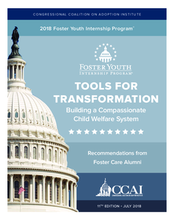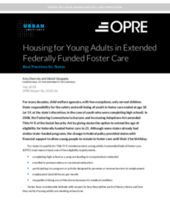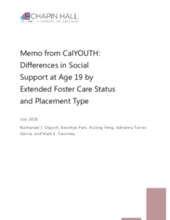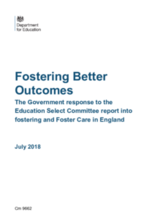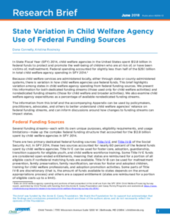Displaying 1181 - 1190 of 2214
CCAI’s Foster Youth Internship Program® is a highly esteemed congressional internship for young adults who spent their formative years in the U.S. foster care system. In this annual policy report, the interns focus on subjects they are personally passionate about due to their experiences and understanding after living in foster care and make personal recommendations for improving the U.S. foster care system.
This brief begins to address knowledge gaps of best practices for housing young adults in extended care, the housing options currently available to those young adults, and how those options vary across and within states in the US.
This memo investigates two questions that pertain to extended foster care and social support. First, are there differences in the types and sources of social support between young people who remain in care past age 18 and young people who exit care? Second, among nonminor dependents, are there differences in the types and sources of social support between youth living in different placement types?
This paper sets out the government’s response to two reports into foster care: The Education Select Committee Inquiry into Fostering and the Foster Care in England report, an independent review commissioned by the Department for Education. The response describes the government’s vision for foster care and improvements for the system, based on the recommendations of the two reports.
The aim of the article is to describe and discuss how issues related to schooling and educational achievement are recognized and addressed in social services case files for children and young people placed in out-of-home care (OHC) in the city of Gothenburg, Sweden.
This qualitative interview study examined experiences of youth-initiated mentoring relationships (YIM) among youth transitioning out of the foster care system.
This brief highlights variation among states in child welfare agency spending from federal funding sources.
This article reviews developments in the Australian NSW child protection system which aim to reduce the number of children in state care.
This study used Group Concept Mapping (GCM) with a sample of 31 foster youth and alumni to explicate a conceptual framework for effective legal representation.
This meta‐analytic review examines the presence and quality of close peer relationships for adoptees and individuals with foster care experience.

